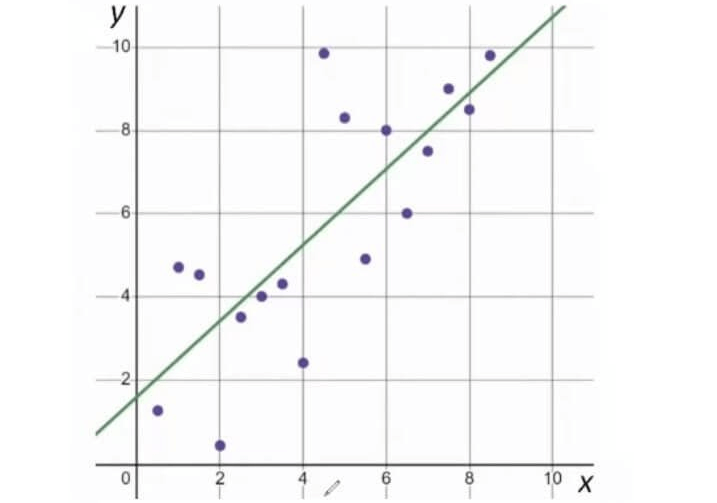DERIVATIVE OF A CONSTANT
Meaning of Derivative
Derivative is the rate of change in one variable or quantity with respect to the change happening in another variable or quantity.
For example, let x be an independent variable and y be a dependent variable which is depending on x.
Then, the derivative of y with respect to x is
dy/dx
Derivative of a Constant
In the above section, we have seen that the derivative of y is the rate of change in y with respect to the change in x.
What if y is a constant?
If y is a constant, then it is fixed or it has no change. If the rate of change is measured in the quantity that has no change or it is fixed, the result will be zero.
Because, if y is getting changed with respect to the change in x, then we will be getting some non-zero value when the rate of change of y is measured. But, if y is fixed or it has no change, then the rate of change of y is zero.
Therefore, the derivative of any constant is zero.
Example 1 :
An electrician charges $7 per hour for the work done by him. If y represents the cost for an electrical work and x represents the number of hours work done, then the rate of change of y is 7/1 or 7. That is, the value of y is getting change by 7 units for every 1 unit change in x.
More clearly, the total cost of a work is increasing by $7 for every 1 hour increase in the work time.
Therefore, the derivative of y with respect to x is 7.
Example 2 :
An electrician has a fixed package of $100 per day (maximum of 10 hours). Here, if the work is done for one hour or two hours or any number of hours (within 10 hours) in a day, the electrician has to be paid $100.
Let y represent the cost of an electrical work and x represent the number of hours work done. Then the rate of change of y is 0. Because, the value of y is fixed (or constant), that is 100.
Therefore, the derivative of y with respect to x is 0.
Power Rule of Derivative
Power rule of derivative is the fundamental tool to find the derivative of a function f(x) which is in the form
f(x) = xn
To get the derivative of xn, we have to bring the exponent n in front of x and subtract 1 from the exponent.
f'(x) = nxn - 1
Find the derivative of each of the following :
Example 3 :
f(x) = x3
Solution :
f(x) = x3
f'(x) = 3x3 - 1
= 3x2
Example 4 :
f(x) = x2
Solution :
f(x) = x2
f'(x) = 2x2 - 1
= 2x1
= 2x
Example 5 :
f(x) = 3
Solution :
f(x) = 3
f(x) = 3(1)
f(x) = 3x0
f'(x) = 3(0)x0 - 1
= 0
Note : Since, 4 is a constant, its derivative is zero.
Constant Coefficient Rule
The derivative of a variable with a constant coefficient is equal to the constant times the derivative of the variable.
That is if there is a variable x with the constant in multiplication or division, we will keep the constant as it is and find the derivative of the variable alone.
Find the derivative of each of the following :
Example 6 :
f(x) = 2x5
Solution :
f(x) = 2x5
Using the power rule of derivative,
f'(x) = 2(5x5 - 1)
= 10x4
Example 7 :
f(x) = 5x3 + 3x2
Solution :
f(x) = 5x3 + 3x2
Using the power rule of derivative,
f'(x) = 5(3x3 - 1) + 3(2x2 - 1)
= 5(3x2) + 3(2x1)
= 15x2 + 6x
Example 8 :
f(x) = x3/3
Solution :
f(x) = x3/3
Using the power rule of derivative,
f'(x) = (3x3 - 1)/3
= (3x2)/3
= (3/3)x2
= x2
Example 9 :
f(x) = -7/x2
Solution :
f(x) = -7/x2
f(x) = -7x -2
Using the power rule of derivative,
f'(x) = -7(-2x -2 - 1)
= -7(-2x -3)
= -7(-2/x 3)
= 14/x 3
Example 10 :
f(x) = 5x3 + 3
Solution :
In the given function, we have two constants 5 and 3. The constant 5 is multiplied by the variable x3 and 3 is staying alone without the variable.
When we find the derivative of f(x) = 5x3 + 3, we have to keep the constant 5 as it is. Because 5 is multiplied by the variable x3. The derivative of 3 is zero, because it is not with the variable.
f(x) = 5x3 - 3
Using the power rule of derivative,
f'(x) = 5(3x3 - 1) - 0
= 5(3x2)
= 15x2
Kindly mail your feedback to v4formath@gmail.com
We always appreciate your feedback.
©All rights reserved. onlinemath4all.com
Recent Articles
-
Digital SAT Math Problems and Solutions (Part - 266)
Aug 26, 25 08:50 AM
Digital SAT Math Problems and Solutions (Part - 266) -
Digital SAT Math Problems and Solutions (Part - 265)
Aug 24, 25 09:41 PM
Digital SAT Math Problems and Solutions (Part - 265) -
Digital SAT Math Problems and Solutions (Part - 264)
Aug 23, 25 08:48 PM
Digital SAT Math Problems and Solutions (Part - 264)
